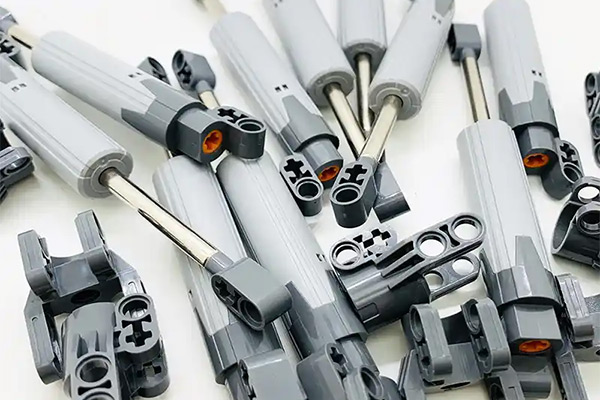Buying Guide Of Industrial Linear Actuator: From Principle to Application
In the field of industrial automation, the electric industrial linear actuator has quickly become a preferred solution for linear motion due to its high precision, excellent controllability, and ease of integration. Whether it's for precisely controlling valves, positioning sensors, or performing high-force push/pull tasks, selecting the right electric linear actuator is crucial for ensuring a stable and efficient system. This article will guide you from the core principles to key parameters and help you make an informed purchasing decision for your specific applications.
1. Understanding the Operating Principle
The core function of an electric linear actuator is to convert rotary motion from a motor into linear motion. This is typically achieved through one of the following drive mechanisms:
Screw Drive: This is the most common method. A motor rotates a nut on a screw shaft or moves the screw shaft itself, generating linear thrust. This mechanism is compact and can provide high-precision positioning and powerful thrust. There are two main types of screw drives:
Ball Screw: Ball bearings roll between the screw shaft and nut, significantly reducing friction. This results in high efficiency and a long lifespan, making it ideal for high-speed, high-load, and high-precision applications.
Trapezoidal Screw (Lead Screw): This has a simpler structure and lower cost, but higher friction and lower efficiency. It is suitable for low-speed, low-load applications where high precision isn't critical.
Belt Drive: A motor drives a slider along a timing belt to achieve linear motion. This method offers high speed and long stroke lengths, but generally provides less thrust and is limited by the stretch of the belt.
2. Key Factors to Consider Before Buying
When choosing an electric industrial linear actuator, you need to carefully evaluate the following key parameters to ensure it's a perfect match for your application needs.
Thrust and Load Capacity: This is the primary factor that determines whether the actuator can handle the task. You must determine the maximum force required to push, pull, or lift your load and add a safety margin of 20-30%. Thrust is typically divided into rated thrust (the continuous force the actuator can provide) and maximum thrust (the peak force it can achieve momentarily).
Speed and Stroke Length: Speed determines how quickly the actuator completes a motion cycle, directly impacting your production pace. Stroke length is the maximum distance the actuator can travel. Choose the appropriate speed and stroke length based on your application's requirements.
Positioning Accuracy and Repeatability: Accuracy is the deviation between the actuator's actual position and the target position. Repeatability measures the actuator's ability to consistently return to the same position after multiple cycles. These parameters are crucial for applications requiring precise alignment or positioning, such as in semiconductor manufacturing or medical devices.
Duty Cycle and Lifespan: Duty cycle is the ratio of working time to total time in a given period. For example, a 25% duty cycle means the actuator can operate for 2.5 minutes within a 10-minute window. Lifespan is typically measured by the total travel distance or the number of operation cycles and is an important indicator of durability.
Environmental Protection (IP Rating): What environment will the actuator operate in? Is it wet, dusty, or oily? The IP (Ingress Protection) rating indicates the actuator's resistance to dust and water. For instance, IP65 means the actuator is completely dust-tight and can withstand low-pressure water jets, making it suitable for most industrial environments.
3. Application-Specific Selection Advice
For high-precision, programmable applications: Ball screw electric actuators are the top choice. They provide superior accuracy and reliability, making them ideal for assembly, testing, and quality control tasks.
For long-stroke, high-speed applications: Belt-driven industrial actuators are a better fit. Their advantages are particularly evident in material handling, spraying, or printing, where speed is a key requirement.
For budget-conscious applications with moderate performance needs: Trapezoidal screw actuators are a solid option. They perform well in simple push-pull, lifting, or opening/closing applications and offer a great balance of cost and performance.
Choosing the right heavy duty linear actuator can be complex and requires a thorough understanding of your specific application. By carefully evaluating the key parameters and consulting with a reputable supplier, you can ensure your automated system operates efficiently and reliably.





